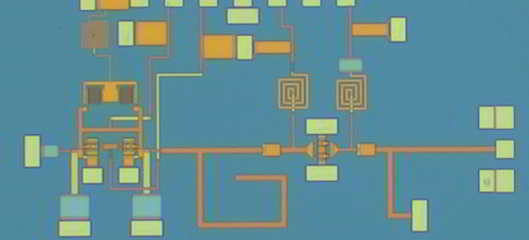
Views: 40
– More efficient air traffic management (ATM) systems are believed to reduce aviation’s climate impact by ten percent. Chalmers leads an EU project to develop cost-effective surface mounted radar components for tomorrow’s enhanced flight vision (EFVS) systems. Early circuits are currently being featured in the Kollberg lab – Chalmers infrastructure for high frequency electronics.
The EU project “Embedded GaN mm Wave Radar Components” (GRACE) is led by Dan Kuylenstierna (right), associate professor at the Chalmers MC2 Microtechnology and Nanoscience Microwave Laboratory:

“The impact of aviation on global warming is often discussed in society. Concepts like “flight shame” were invented to make people fly less. However, much in our society depends on reliable and sustainable transportation, ”he says.
The Advisory Council for Aeronautical Research in Europe (ACARE) has set ambitious targets to reduce the climate impact of aviation. The goal is to reduce emissions by 50%, of which a more efficient ATM should contribute 10%.
A key technology for better ATMs is the so-called enhanced flight vision system (EFVS), which is used to facilitate lifting and landing in low visibility conditions. In future EFVS systems, millimeter-wave radar for the 93 to 100 GHz frequency range is expected to be an important element in completing the infrared cameras that form the basis of today’s system.
“At the moment, however, there are no cost-effective surface-mounted components to build these radar systems,” explains Dan Kuylenstierna.
Together with Fraunhofer IZM’s partners in Germany, OMMIC in France and MC2 Technologies, also located in France, Chalmers therefore accepted this challenge. The EU GRACE project covers circuit design and the packaging of radar components. For circuit design, so-called GaN HEMT microwave monolithic circuit technology (MMIC) is used, a type of semiconductor technology particularly suited for generating high power at higher frequencies. The ultimate goal is to demonstrate a technology concept for future surface mounted millimeter wave radar components.
Signal sources are designed at Chalmers and power amplifiers at MC2 Technologies. OMMIC is responsible for GaN HEMT MMIC technology, including processing. Fraunhofer IZM’s responsibility is to package the complete circuits.
After system analysis and design, the first circuits left the OMMIC foundry for characterization in Chalmers and MC2. After characterization, the functional chips will be sent to Fraunhofer IZM for packaging.
The GRACE project started in November 2018 and is funded by the EU Horizon 2020 research and innovation program for a total of SEK 18.7 million.
Text: Michael Nystås
Dan Kuylenstierna Photo: Michael Nystås
Contact: Dan Kuylenstierna, Associate Professor, Microwave Electronics Laboratory, Department of Microtechnology and Nanoscience – MC2, Chalmers University of Technology, dan.kuylenstierna@chalmers.se, 031-772 17 98
About Project Grace:
Built-in mm GaN Wave Radar (GRACE) Components
The GRACE project aims to develop SMT (Surface Mount Technology) components for mm (mmW) wave frequencies, with special focus on W-band radar systems.
High-performance, low-cost radar is critical for the future Enhanced Flight Mink System (EFVS) that combines IR sensors and mmW radar.
Related article: Infrared spectrometer Smaller than a coin